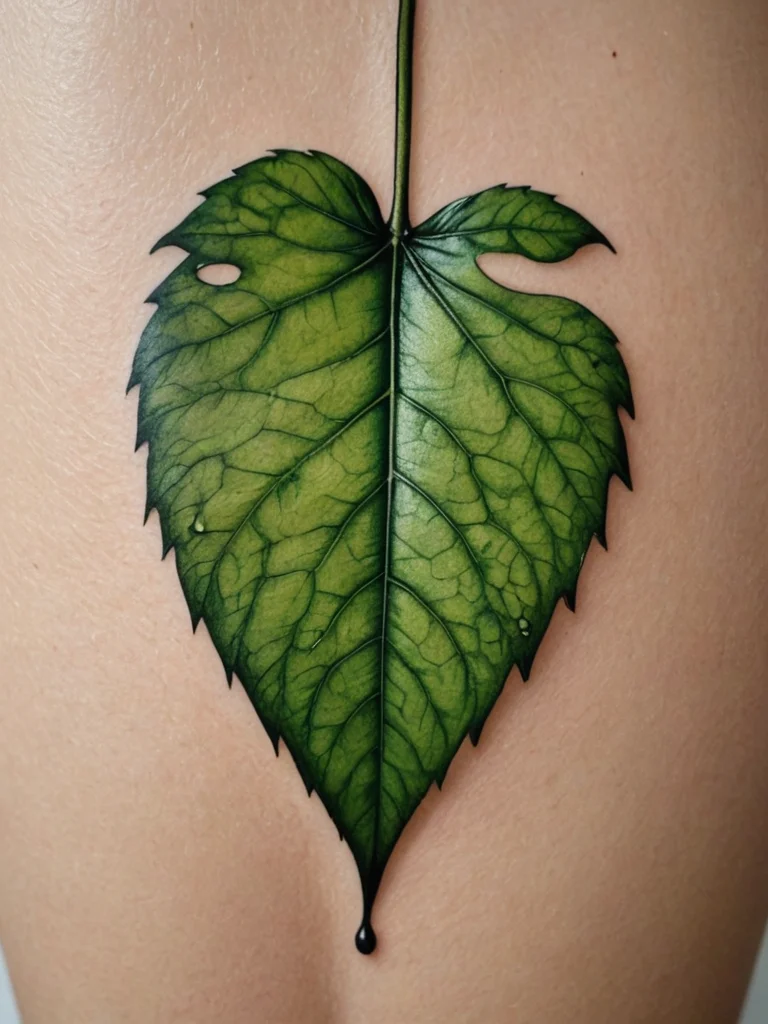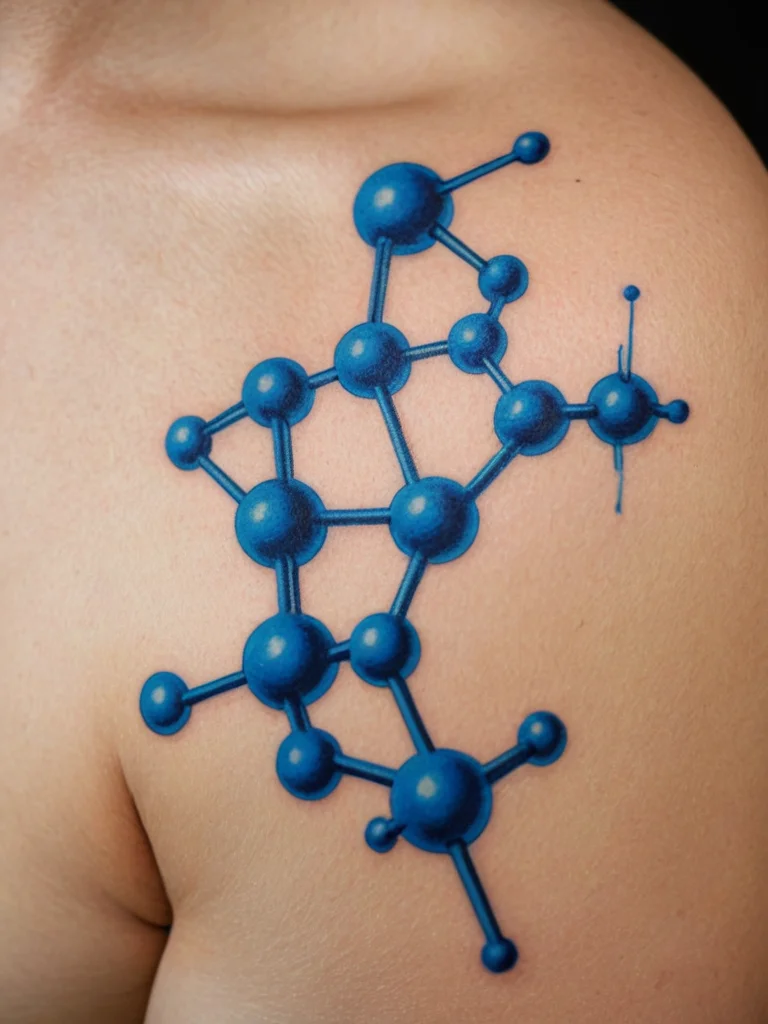The journey into the world of tattoos is often exhilarating, filled with anticipation for a new piece of art that will permanently adorn your skin. Yet, for many contemplating their first tattoo or even adding to an existing collection, a fundamental question frequently arises, echoing with a mix of curiosity and concern: are tattoo inks truly toxic? This is not merely a fleeting thought but a significant consideration, driven by a natural desire for safety and well-being. The internet is awash with conflicting information, sensationalized headlines, and anecdotal evidence, making it incredibly challenging for the average person to discern fact from fiction. It’s a question that delves deep into the chemistry of the pigments, the physiological responses of the human body, and the evolving landscape of regulations and industry practices. Understanding the genuine risks, separating them from unfounded fears, and gaining clarity on what constitutes a safe tattooing experience is paramount for anyone considering this ancient art form.
Unveiling the truth behind this pervasive question requires a meticulous examination of the components within tattoo inks, the potential reactions they might trigger, and the advancements in both manufacturing and application techniques that have reshaped the modern tattooing landscape. It is a nuanced topic that cannot be distilled into a simple yes or no answer, as the reality is far more intricate and dependent on a multitude of factors, including the quality of the ink, the skill of the artist, and the individual’s unique biological makeup. As seasoned experts in tattoo culture, we aim to provide you with a comprehensive and balanced perspective, equipping you with the knowledge needed to make informed and confident decisions about your body art. We will navigate through the science, debunk common myths, and empower you to approach your tattoo experience with peace of mind, armed with a clear understanding of what makes tattoo inks safe and what precautions you should always consider.
Are tattoo inks toxic? Unpacking the truth behind common fears

The question of whether tattoo inks are toxic is one that has long captivated public discourse, often fueled by sensational media reports and a lack of clear, universally accepted regulations. Historically, tattoo inks were concocted from a variety of natural and sometimes hazardous substances, ranging from soot and plant extracts to minerals like cinnabar (mercuric sulfide), which is indeed toxic. Ancient tattooing practices, while culturally rich and significant, certainly did not prioritize the kind of chemical purity and biological inertness that modern science demands. The rudimentary understanding of chemistry and human physiology meant that adverse reactions, though perhaps not always linked directly to the ink, were an inherent risk. People might have used materials that, unbeknownst to them, contained heavy metals or other harmful compounds, leading to long-term health issues or severe localized reactions.
As tattooing evolved from a niche practice to a widespread form of personal expression, the composition of inks began to change, driven by a desire for more vibrant, stable colors and, eventually, greater safety. However, this evolution was largely unregulated for many years, meaning that ink manufacturers operated without strict oversight, leading to inconsistencies in product quality and purity. This historical context contributes significantly to the lingering perception of toxicity. Many of the fears surrounding tattoo inks today stem from a time when ingredients were less controlled, and the potential for contaminants or harmful compounds was much higher. For example, some older red inks were notorious for causing allergic reactions, often due to their cadmium or mercury content. Similarly, some blue and green pigments contained cobalt or chromium, metals that can cause hypersensitivity reactions in susceptible individuals.
Defining “toxicity” in this context is crucial. It’s not just about immediate, acute poisoning, which is exceedingly rare with modern, professionally manufactured tattoo inks. Instead, concerns often revolve around potential long-term effects, such as carcinogenicity (the ability to cause cancer), genotoxicity (damage to genetic material), immunotoxicity (harm to the immune system), or allergenic potential. The scientific community’s approach to assessing these risks involves studying the chemical breakdown of pigments in the body, their migration, and their interaction with biological systems over time. While the human body is remarkably resilient and capable of encapsulating foreign particles like tattoo pigments, the question remains whether these encapsulated particles or their potential degradation products could pose a health risk decades down the line. It is a complex area of research, with ongoing studies seeking to provide definitive answers.
Furthermore, the term “toxic” can also be applied to localized adverse reactions that, while not life-threatening, can significantly impact quality of life. These include chronic inflammation, persistent itching, granulomas (small lumps of immune cells), or sarcoid-like reactions, which are immune responses that can spread beyond the tattooed area. While these are often categorized as hypersensitivity reactions rather than direct toxicity, they underscore the importance of understanding ink composition and individual susceptibility. The modern tattoo industry, particularly in regions with robust regulatory frameworks like the European Union, has made significant strides in standardizing ink ingredients and demanding greater transparency from manufacturers. This push for cleaner, safer inks is a direct response to historical issues and ongoing scientific inquiry, aiming to minimize any potential adverse health outcomes. It signifies a collective effort to shift from an era of uncertainty to one built on scientific rigor and consumer protection.
Beyond the pigment: What exactly is in your tattoo ink?

To truly comprehend the safety of tattoo inks, one must delve into their fundamental composition. Tattoo inks are not monolithic substances; rather, they are complex mixtures, carefully formulated to achieve vibrant, lasting color while ensuring a smooth application process. Understanding the primary components – pigments, carriers, and various additives – is key to demystifying the perceived risks and appreciating the advancements in ink manufacturing. Each component plays a specific role, and its quality and purity are paramount to the final outcome, both aesthetically and for the wearer’s health.
At the heart of every tattoo ink are the **pigments**. These are the color-imparting agents, tiny particles suspended within the carrier solution. Historically, pigments were derived from natural sources: carbon black from soot or bone char, reds from iron oxides (rust) or cinnabar, yellows from ochre, and blues from cobalt or lapis lazuli. While some natural pigments are still used, modern tattoo inks predominantly utilize synthetic organic and inorganic compounds for their superior color stability, vibrancy, and reduced impurity levels. Organic pigments are typically carbon-based compounds, offering a vast spectrum of bright colors. Examples include azo pigments (often used for reds, yellows, oranges) and quinacridones (known for vibrant reds, purples, and oranges). Inorganic pigments, on the other hand, often contain metal compounds. Carbon black, derived from burning carbon, remains the most common inorganic pigment for black ink, prized for its deep saturation and relative inertness. Titanium dioxide is frequently used for white inks and as a diluent to lighten other colors, while various iron oxides can be found in some red, brown, and yellow shades. The manufacturing process for these synthetic pigments is critical; reputable manufacturers purify them to remove heavy metal contaminants and other undesirable by-products that might arise during synthesis. It is these trace impurities, rather than the primary pigment itself, that often raise the most significant toxicity concerns, highlighting the importance of sourcing inks from trusted brands with stringent quality control.
The **carrier solution**, also known as the solvent, is the liquid base that suspends the pigments. Its primary function is to deliver the pigment into the skin, ensure an even dispersal of color, prevent clumping, and maintain the ink’s sterility. Common carrier ingredients include purified water, ethyl alcohol (ethanol), glycerin, propylene glycol, and witch hazel. Purified water is essential for solubility and hydration. Alcohol acts as a disinfectant, sterilizing agent, and also helps the ink penetrate the skin more effectively and dry faster, preventing bacterial growth during the tattooing process. Glycerin and propylene glycol are humectants, meaning they attract and retain moisture, which helps keep the ink flowing smoothly and prevents it from drying out too quickly in the cap or needle. They also act as viscosity modifiers, giving the ink its ideal consistency. Witch hazel, derived from the witch hazel plant, is a natural astringent often used for its soothing properties and to reduce skin irritation. The quality of these carrier ingredients is just as important as the pigments. Impure water can introduce bacteria, while low-grade alcohols might contain undesirable impurities. Professional ink manufacturers use pharmaceutical-grade ingredients for their carrier solutions, ensuring they are non-toxic, non-irritating, and sterile.
Beyond pigments and carriers, tattoo inks often contain various **additives** in smaller concentrations, each serving a specific purpose. These might include preservatives to prevent bacterial or fungal growth (especially if the ink is not used immediately after opening), binding agents to ensure the pigment remains suspended evenly and adheres well to the skin, and sometimes even small amounts of surfactants to improve flow. While these additives are present in minute quantities, their chemical nature is still scrutinized. The regulatory push, particularly in regions like the EU with its REACH (Registration, Evaluation, Authorisation and Restriction of Chemicals) regulations, targets all components of tattoo ink, including these seemingly minor additives, to ensure they meet strict safety thresholds. Trace elements and unintended contaminants can also be present, sometimes originating from the raw materials or the manufacturing process itself. For example, some mineral pigments, even after purification, might contain trace amounts of heavy metals like nickel, chromium, or lead. While these levels are typically very low in reputable inks, individuals with pre-existing metal allergies might still react. This meticulous breakdown of ink components reveals that modern tattoo inks, when produced by ethical and compliant manufacturers, are formulated with a strong emphasis on purity and stability, aiming to minimize adverse reactions and ensure long-term safety for the tattooed individual.
Navigating the risks: Common & rare reactions to tattoo ink explained

Despite the significant advancements in tattoo ink manufacturing and hygiene protocols, it is important for anyone considering a tattoo to be aware of the potential reactions that can occur. These reactions can range from common, mild irritations to rare, more severe complications, and understanding them helps in making informed decisions and seeking appropriate care if needed. While the vast majority of tattoos heal without incident, being knowledgeable about the possibilities empowers you to monitor your body art effectively.
Among the most **common reactions** are various forms of localized skin irritation and hypersensitivity. Allergic reactions are perhaps the most frequently discussed, often manifesting as redness, swelling, itching, and raised skin within the tattooed area. Red inks are historically notorious for causing more allergic reactions than other colors, primarily due to the specific pigments used, such as mercury sulfide (cinnabar) in older inks or certain organic azo dyes in modern ones. However, yellow, blue, and green inks can also trigger sensitivities. These reactions can appear immediately after tattooing or develop months, or even years, later. Photosensitivity is another common concern, particularly with yellow and red pigments, where the tattooed skin reacts to sunlight with itching, swelling, or redness. This occurs because certain pigments can absorb UV light, initiating a phototoxic or photoallergic response. Some individuals might also develop inflammation, characterized by persistent redness, warmth, and tenderness, which can sometimes be mistaken for infection. Furthermore, granulomas, which are small, firm lumps or nodules, can form around the tattoo pigment as the body’s immune system tries to wall off the foreign particles. These are often benign but can be persistent and sometimes require medical intervention. More diffuse reactions like lichenoid reactions, characterized by itchy, flat-topped bumps, or sarcoid-like reactions, which mimic the systemic autoimmune disease sarcoidosis, can also occur, though less frequently. These reactions highlight that the body’s immune system, in its attempt to protect against foreign substances, can sometimes overreact to the tattoo pigments.
While less frequent, **rare and severe reactions** can also occur, though it is crucial to understand that many of these are often linked to improper tattooing practices or compromised aftercare, rather than solely the ink itself. Infections, for instance, are a significant concern. These can be bacterial (e.g., staphylococcus, streptococcus), viral (e.g., herpes simplex if proper hygiene is not maintained), or fungal. While contaminated ink can sometimes be a vector for atypical mycobacterial infections (which are notoriously difficult to treat), the majority of infections result from unsanitary tattooing environments, non-sterile needles, or inadequate aftercare where bacteria enter the broken skin. Systemic effects, such as lymph node pigmentation, are also observed, where tattoo pigment particles can migrate from the skin to the lymph nodes, causing them to become discolored. While this phenomenon is well-documented, the long-term health implications of such migration are still being studied, though current evidence does not suggest a direct link to severe disease. Autoimmune responses, where the body’s immune system mistakenly attacks its own tissues, have been an area of ongoing research. While tattoos can sometimes trigger or exacerbate pre-existing autoimmune conditions in susceptible individuals, a direct causal link between tattoo ink and the *development* of new autoimmune diseases is not definitively established in broad populations. Scarring and keloid formation are also potential complications, especially for individuals predisposed to abnormal wound healing. Finally, a very rare but notable interaction is the burning sensation that some individuals experience in their tattoos during an MRI scan. This is thought to be due to the magnetic properties of certain metallic pigments (e.g., iron oxides in some black or red inks) reacting with the powerful magnetic field of the MRI machine, causing localized heating. While generally mild and temporary, it is a point of consideration for those with extensive tattooing.
Perhaps the most concerning and widely debated risk is that of **carcinogenicity**, or the potential for tattoo inks to cause cancer. This is an area of intense scientific scrutiny, often sensationalized by the media. The primary concern lies with certain organic pigments (particularly some azo dyes) that, under specific conditions (e.g., UV light exposure or laser removal), might break down into aromatic amines. Some of these amines are known carcinogens or mutagens (substances that can damage DNA) when ingested or inhaled in significant quantities. However, the scientific consensus, based on current research, indicates no conclusive evidence directly linking modern, reputable tattoo inks to an increased risk of skin cancer or other cancers in humans. Research is ongoing, focusing on long-term studies and the fate of pigments in the body over decades. Regulatory bodies, such as the European Chemicals Agency (ECHA) through REACH, have responded by identifying and restricting pigments and other ingredients (like certain aromatic amines) that are known or suspected carcinogens, mutagens, or sensitizers. This proactive regulatory approach aims to remove the most concerning chemicals from tattoo inks, enhancing safety standards across the industry. While complete absence of risk can never be guaranteed for any substance introduced into the body, the overall picture, supported by vast amounts of data from millions of tattooed individuals, suggests that the risk of cancer from tattoo ink, particularly from professionally applied and compliant inks, is exceedingly low. The emphasis is on continuous research, stringent regulation, and the use of high-quality, pre-sterilized inks from reputable manufacturers.
Your guide to safer tattooing: Choosing inks, artists & aftercare wisely

Navigating the world of tattoos safely goes far beyond simply choosing a design. It involves making informed decisions at every stage, from selecting the right artist and understanding the inks they use to meticulously caring for your new body art. As an individual seeking a tattoo, you hold significant power in ensuring a safe and positive experience. By asking the right questions and being aware of best practices, you can dramatically mitigate potential risks and enjoy your tattoo for years to come.
The first and perhaps most crucial step in ensuring safety lies in **choosing your tattoo artist and studio wisely**. This is not merely about finding someone whose artistic style you admire; it’s about vetting their professionalism, hygiene standards, and adherence to health regulations. Always look for artists who are licensed and whose studios are regulated by local health authorities. These licenses are a testament to the studio meeting minimum sanitation and safety requirements. During your consultation, pay close attention to the cleanliness of the environment. Is the studio spotless? Are the work surfaces clean and organized? Observe their sterilization practices: a professional artist will always use single-use needles and tubes, unwrapping them from sterile packaging in front of you. They should wear fresh, disposable gloves throughout the entire tattooing process. Autoclaves, which are devices used to sterilize equipment with high-pressure steam, should be a standard feature in any reputable studio for reusable equipment, though for most direct skin contact tools, single-use disposables are now the norm. Do not hesitate to ask your artist about their sterilization protocols; a trustworthy professional will be transparent and proud to explain their safety measures. A knowledgeable artist will also be well-versed in the inks they use, understanding their composition and sourcing. They should be able to tell you about the brands they prefer, why they choose them, and assure you of their quality and compliance with safety standards.
**Choosing inks** is largely the artist’s responsibility, but as a client, you have the right to inquire. Reputable tattoo artists prioritize the safety of their clients and therefore select inks from well-established manufacturers known for their quality control and transparency. Look for inks that comply with current regulations, such as those set by the European Union’s REACH program, which has some of the strictest chemical safety standards globally. Many ink manufacturers now prominently feature their compliance on their product labels. Don’t be afraid to ask your artist which brands of ink they use and if they can provide assurance of their quality and safety certifications. The rise of vegan-friendly tattoo inks has also addressed concerns for those wishing to avoid animal-derived ingredients, typically found in older inks or some glycerins; these options are often a good indicator of a manufacturer’s commitment to high-quality, purified components. While heavy metal-free claims are common, it’s more accurate to seek inks with extremely low levels of regulated metals, as completely metal-free pigments are rare, particularly for certain colors. The key is that the levels are within safe, regulated thresholds. A professional artist will also use pre-sterilized, sealed bottles of ink, discarding any leftover ink after your session to prevent cross-contamination.
**Proper aftercare** is equally critical to the safety and longevity of your tattoo. Even with the cleanest studio and safest ink, poor aftercare can lead to complications such as infections, poor healing, and compromised ink retention. Your artist will provide specific aftercare instructions, and it is imperative that you follow them diligently. This typically involves keeping the tattoo clean by gently washing it with mild, unscented antibacterial soap and lukewarm water, and then allowing it to air dry or patting it gently with a clean paper towel. Regular moisturizing with an unscented, tattoo-specific lotion or ointment is also crucial to prevent the skin from drying out and cracking, which can lead to scabbing and loss of ink. Sun protection is vital during the healing phase and throughout the life of your tattoo; direct sun exposure can not only cause irritation and fading but also increase the potential for adverse reactions, especially with certain pigment types. Avoid swimming in pools, hot tubs, or natural bodies of water during healing to prevent infection, and refrain from picking at scabs or peeling skin. Recognizing the signs of a problem, such as excessive redness, swelling, pus, foul odor, or fever, is also important. If you observe any of these symptoms, seek medical advice promptly. A patch test, where a small amount of ink is applied to a discreet area of your skin days or weeks before your full tattoo, is sometimes offered or requested by clients with known sensitivities. While not foolproof (as reactions can develop over time), it can provide an early indication of immediate allergic responses to specific inks, adding an extra layer of precaution for those particularly concerned about sensitivities.
The bottom line: Making informed & confident tattoo choices

The journey into the world of tattoos is a deeply personal and often transformative experience, marking significant moments, expressing individuality, or simply celebrating art. As we’ve thoroughly explored, the question of whether tattoo inks are toxic is not a simple one, nor is it black and white. Instead, it is a complex landscape shaped by historical practices, scientific advancements, evolving regulations, and individual biological responses. The fundamental truth that emerges from this detailed examination is that while tattooing inherently involves introducing foreign substances into the body, the modern practice, when conducted by reputable professionals using high-quality, compliant inks, has reached unprecedented levels of safety.
We have seen how the components of modern tattoo inks – meticulously purified pigments, sterile carrier solutions, and carefully selected additives – are formulated to minimize risk and maximize stability. The shift from unregulated, often homemade concoctions to scientifically developed, industrially produced inks represents a monumental leap forward in consumer safety. Concerns about toxicity are largely addressed through rigorous testing and manufacturing standards that aim to eliminate harmful contaminants and reduce the allergenic potential of pigments. While no substance introduced into the human body can ever be declared 100% risk-free, the risks associated with modern tattoo inks are, for the vast majority of individuals, exceedingly low, especially when compared to the historical practices that sometimes relied on truly hazardous materials.
The current scientific consensus, supported by ongoing research and data from millions of tattooed individuals worldwide, does not indicate a widespread, conclusive link between modern tattoo inks and severe systemic health issues such as cancer or widespread autoimmune diseases. Instead, the focus has shifted to localized skin reactions, which, while sometimes bothersome, are typically manageable and often related to individual sensitivities or improper aftercare. Regulatory bodies, particularly in regions like the European Union, are continually refining standards, pushing for greater transparency in ingredient labeling, and restricting substances that pose even a theoretical risk. This proactive approach ensures that the industry consistently strives for higher safety benchmarks, making tattoos safer than ever before.
Ultimately, making informed and confident tattoo choices hinges on your willingness to be a proactive participant in your own safety. This means selecting a licensed, reputable tattoo artist who prioritizes hygiene and uses high-quality, compliant inks. It involves asking questions, observing the studio’s practices, and being comfortable with the answers you receive. It also means committing to diligent aftercare, understanding that your role in the healing process is just as vital as the artist’s skill. By embracing these principles, you empower yourself to navigate the tattoo landscape with clarity and peace of mind. The beauty and meaning of a tattoo extend far beyond its visual appeal; they encompass the trust you place in your artist and the confidence you have in the materials used. Armed with this knowledge, you are not just getting a tattoo; you are investing in a piece of art that is applied safely, responsibly, and with the utmost respect for your well-being. Embrace the art, express yourself, and do so with the confidence that you have made truly informed choices for your body.